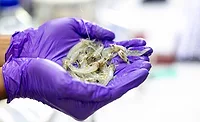Lessons Learned from 1937
Some lessons are just as relevant today as on the day the events occurred

It has been said that those who cannot learn from history are doomed to repeat it. This lesson learned is from an event that, although it predates me, has influenced my approach to public health over my entire career.
The antibacterial drug sulfanilamide was responsible for the deaths of more than 100 people in 15 states during the fall of 1937. Many of the deaths were children being treated for sore throats. This tragic incident led to the passage of the 1938 Federal Food, Drug, and Cosmetic Act, which significantly increased the powers of the U.S. Food and Drug Administration (FDA) to regulate food and drugs.
Sulfanilamide was used to treat streptococcal infections and had been used safely for some time in tablet and powder form. A pharmacist for a Tennessee pharmaceutical manufacturer found that sulfanilamide would dissolve in diethylene glycol and then by adding raspberry flavoring, they produced “Elixir Sulfanilamide,” which would be more palatable for children.
Today, we recognize diethylene glycol as a sweet-tasting and colorless liquid commonly used in the commercial preparation of antifreeze, brake fluid, and some dyes. In 1937, food and drug manufacturers were allowed to use almost anything as an ingredient in their products without any approval from FDA.
There were 633 total shipments of the elixir to druggists, doctors, and salespeople all over the country. Some of it was sold without prescriptions to purchasers whose names were not known. In other cases, doctors had incomplete records or no records at all to identify the names and addresses of patients for whom they had prescribed this “killer” concoction. This was a real dilemma for FDA.
FDA set out to make sure the product was retrieved. Practically the entire field force of 239 FDA inspectors and chemists was assigned to the task. State and local health officials were asked to join the search, while newspapers and radio stations continued to issue warnings. This became a huge, organized effort.
FDA staff began by checking the company's shipping records and distribution lists of their four distributing houses. They examined many thousands of sales and order slips one by one. They began tracking down the firm's 200 salespeople for questioning, which was a daunting task. In one case, a salesman who was reported to be in a hotel in Washington, DC, had left forwarding addresses for himself in Jackson, MI, and in Baltimore. Unfortunately, the addresses were for another man with the same name. FDA spent 4 days searching and finally found the salesman in University Park, MD. Once these salespeople were found, there was still the problem of getting accurate information about where the elixir was sold and to whom. A salesperson in Texas, for instance, would reveal this information to FDA only after being jailed by state authorities.
Looking for quick answers on food safety topics?
Try Ask FSM, our new smart AI search tool.
Ask FSM →
I do not think many people realize the heroic efforts made by FDA and state and local inspectors to track down stocks of the elixir before it could kill more Americans.
One Texas state inspector drove 460 miles and called on 45 druggists in 17 towns within a 24-hour period. An Arkansas-based FDA inspector investigating one lot of the drug spent 4 days tracking down just one purchase, knowing only that it was sold to someone named Long. The inspector traveled throughout several small towns in Arkansas, finally reaching the right Long family just as a funeral for their 7-year-old daughter, who had taken the drug, got under way.
A South Carolina inspector tracked a bottle of the elixir to the grave of a man who had just died, finding the bottle among his personal effects on top of his grave, which was a custom in those parts for disposing of sickroom utensils.
Amazingly, the nation's food and drug inspection forces mobilized so thoroughly that they retrieved over 99 percent of the 700 pints of the poisonous elixir that had been distributed throughout the nation. Just imagine for a moment how many lives were saved by their efforts!
Sixty years later, the Association of Food and Drug Officials would offer their vision of an integrated food safety system that would result in government agencies at all levels working closer together in a more organized and coordinated fashion.
I have always believed that the mobilization of federal, state, and local officials in responding to the sulfanilamide episode might have been our profession’s first real integration effort. To this day, many of us who continue to promote an integrated food safety system use the incident to illustrate the importance of food protection agencies working closely together, particularly in our response to emergencies. We can also apply this to our response efforts with food illnesses and recalls.
The 1937 sulfanilamide event taught us many important things. Among them is that better outcomes result from collaboration and that our efforts to advance an integrated food safety system are well-intentioned.
Resources
- https://www.fda.gov/files/about fda/published/The-Sulfanilamide-Disaster.pdf.
- Young, Frank E. Speech at the Annual Conference of the Association of Food and Drug Officials, Summit Hotel, Hartford, CT, June 11–15, 1988.
Joe Corby worked for the New York State Department of Agriculture and Markets for 37 years, retiring in 2008 as the director of the Division of Food Safety and Inspection. He served over 10 years as the executive director for the Association of Food and Drug Officials (AFDO), retiring in October 2018. He is currently a senior adviser for AFDO, and he serves on the board of directors for the International Food Protection Training Institute (IFPTI), the Partnership for Food Safety Education, and on the Education Advisory Board for the Food Safety Summit. He is also an instructor for IFPTI, Louisiana State University, the National Environmental Health Association, and the University of Tennessee. He has been an outspoken advocate for the advancement of a nationally integrated food safety system and continues to work with numerous groups and associations in support of this cause. Joe is a past president of AFDO and a winner of its prestigious Wiley Award.








